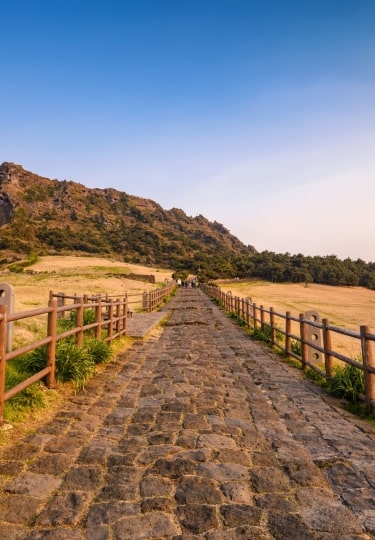Jeju is a large island positioned off of South Korea’s southern coastline with a unique cultural identity that rates as a prime destination for nature lovers.
Jeju Island has been shaped over the eons by volcanic activity, most notably by the massive Mt. Halla, which has contributed to the island’s subtropical geography. Topography has also exerted a heavy influence over the Korean cultural traditions here, which differ in many ways from the traditions on the mainland.
From sandy beaches and striking waterfalls to lava tubes, volcanic rock, and quirky stone sculptures, discover the best things to do on Jeju Island.
Visit Sangumburi Crater
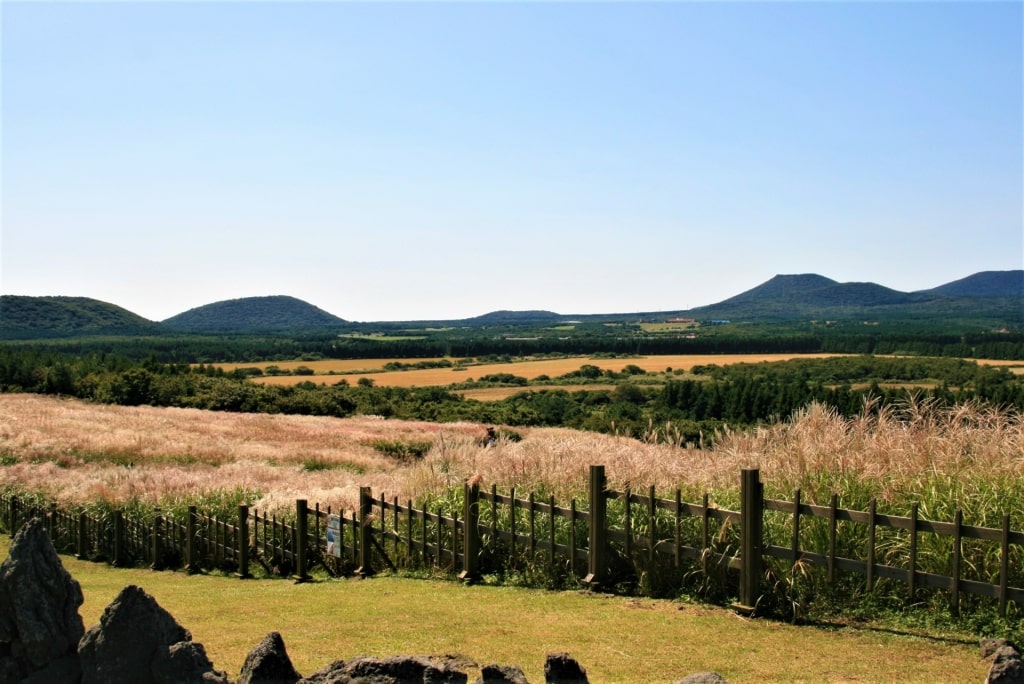
Sangumburi Crater
The gentle stroll out to Sangumburi Crater, along a lava stone-lined path, is a divine way to become acquainted with Jeju’s volcanic backdrop.
The crater, over 2,000 feet in width and more than 300 feet deep, is full of plant life. Hundreds of plant species, as well as birds and roe deer call this massive sunken spot home.
While you can’t descend into the actual crater, you can observe it from above. The area around the parasitic cone (formed from fractures along the flanks of a larger volcano) is rife with tall silver pampas grass, red-thorn trees, and Korean fir trees.
If green pastures and open-air expanses appeal, a visit to Sangumburi Crater is a must.
Admire Yeomiji Botanical Garden’s Flora
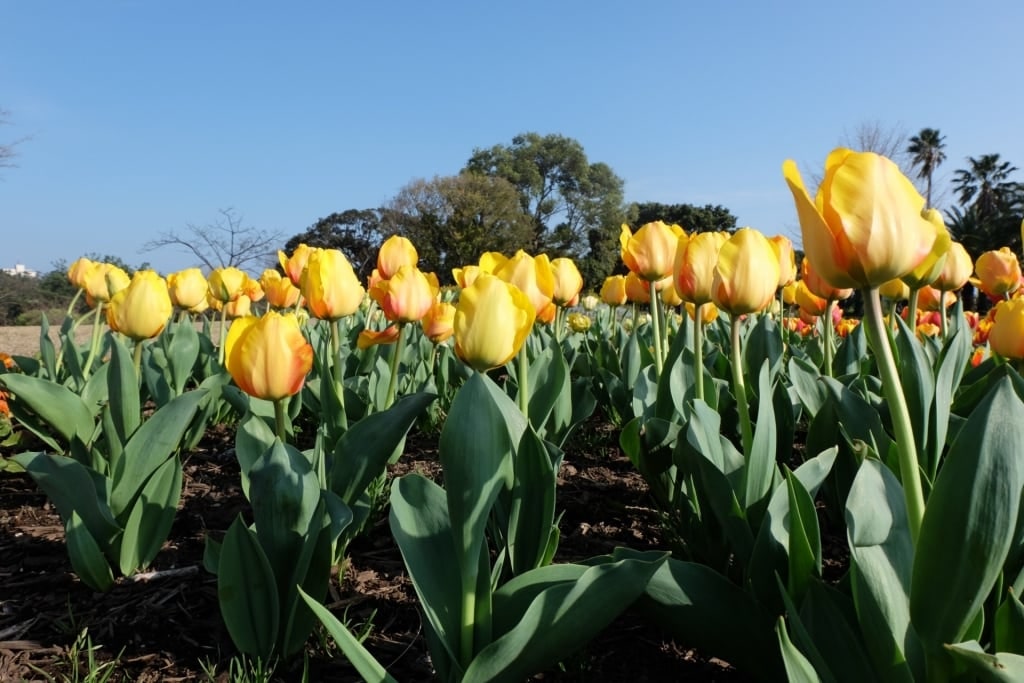
Tulips
As you roam about the isle, keep in mind that you can find an enormous collection of local and exotic plants at Yeomiji Botanical Garden. If botany piques your interest, taking in the vast assortment of greenery inside this big garden is one of the best things you can do on Jeju Island.
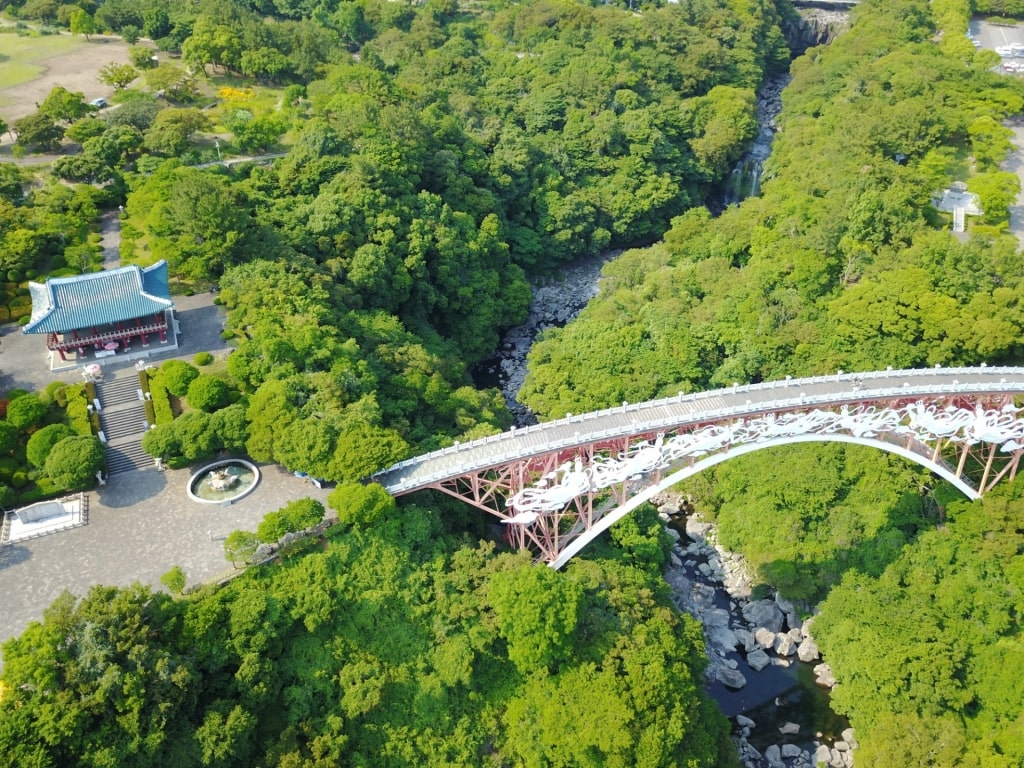
Yeomiji Botanical Garden
Yeomiji Botanical Garden touts itself as the largest greenhouse in East Asia. Apart from the circular main structure, with around 2,000 plants on display, the complex also features several outdoor gardens, including Korean, Japanese, Italian, and Perennial gardens, as well as a lovely French garden.
The indoor greenhouse hosts a variety of gardens too, like the cactus, flower, jungle, and water lily gardens. Yeomiji is ideal for investigating on a rainy day. You can even ride the elevator to the top of the central tower for sweeping views of Mt. Halla and the neighboring countryside.
Travel Back in Time at Jeju Folk Village
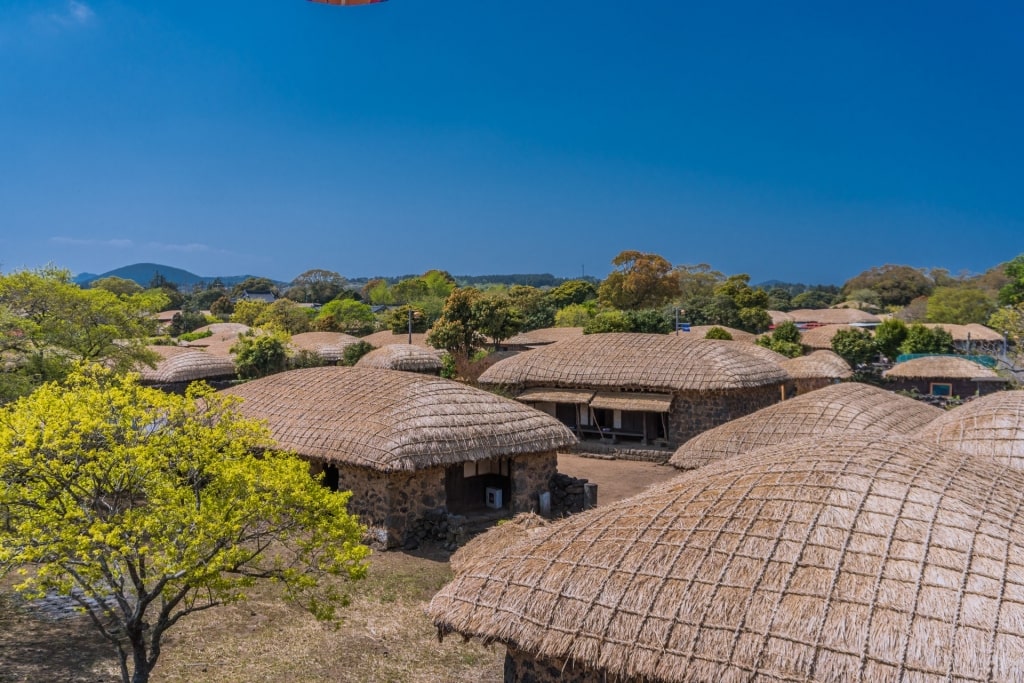
Jeju Folk Village
Travel back in time at Jeju Folk Village, situated along the island’s southeastern shores, to build a better picture of what life would have been like during Korea’s late Joseon Dynasty.
The Joseon Dynasty extended from the late 1300s until it came to an end in 1910 after the Japanese annexed the peninsula.
Jeju Folk Village is a well-managed historical theme park, of a sort, that will let you dive deeper into the island’s traditional ways of life.
Explore the reconstructed houses, buildings, and exhibits to learn about Jeju’s folk art, farming, and fishing customs, along with the tools people used for work, and the folk games people used to play.
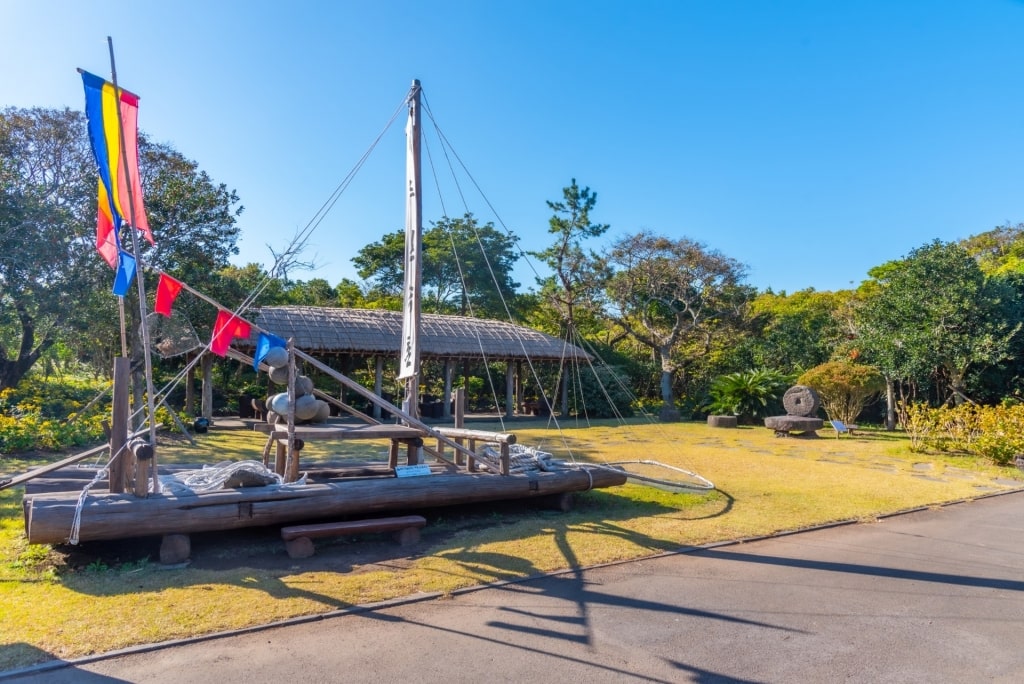
Jeju Folk Village
You can try on some traditional Korean garb here too, coming in the form of the immensely colorful, handcrafted hanbok clothing style.
A few of the different show villages here, like the Mountain Village and Fishing Village, have been featured in Korean historical television series, including Dae Jang Geum (Jewel in the Palace), in case you’re a fan of Korean dramas.
Shop at Dongmun Market
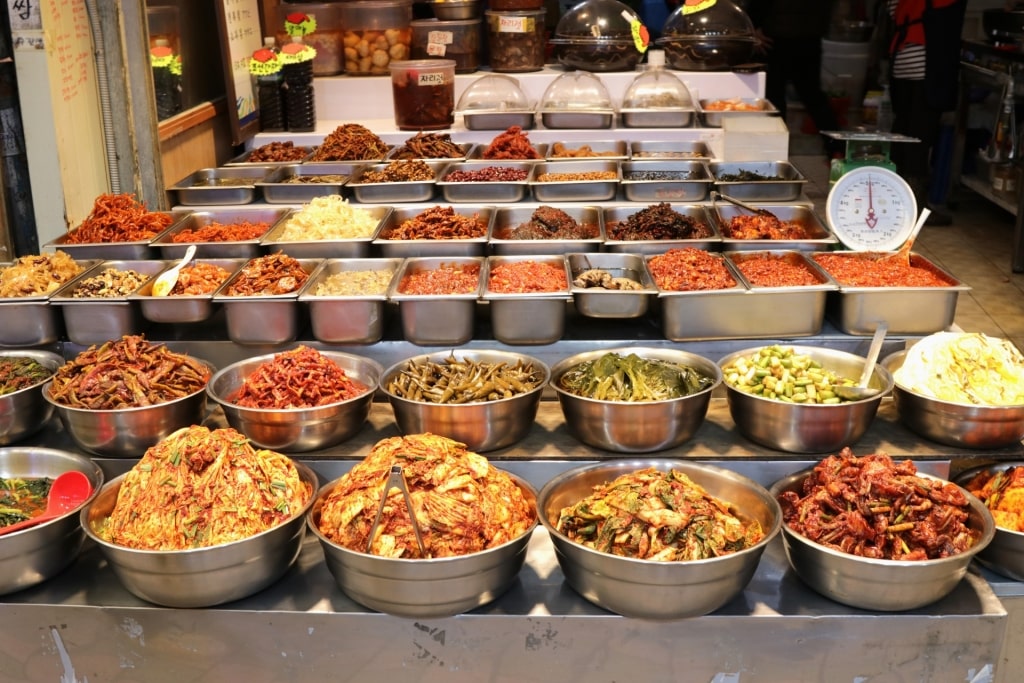
Dongmun Market
If you are looking for something to do on Jeju Island that will immerse you in the local scene, try shopping at Jeju City’s traditional Dongmun Market. This is where locals shop and the market is bursting with color.
Dongmun Market is also a great place to try Korean street food. Vendors and food stalls peddle many of the island’s specialties, with seafood and black pork topping the list.
You can taste dumplings, dig into some dweji bulbaek, which is marinated slices of pork grilled over an open flame, or sample some brothy jeonbok ttukbaegi, abalone hotpot.
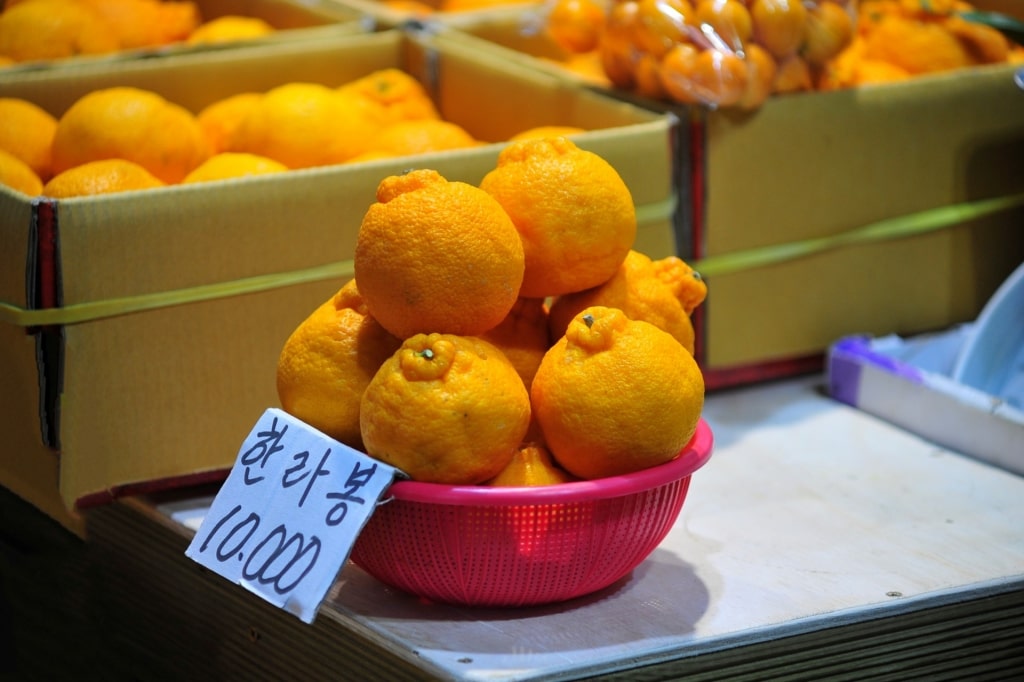
Tangerines
Sweets and fruits, including chocolate and tangerines, are available inside the market. You’ll come across trinkets galore here as well, plus lots of small dol hareubang statuettes, depicting stone grandfather figures, symbols of the island.
Climb Mt. Hallasan
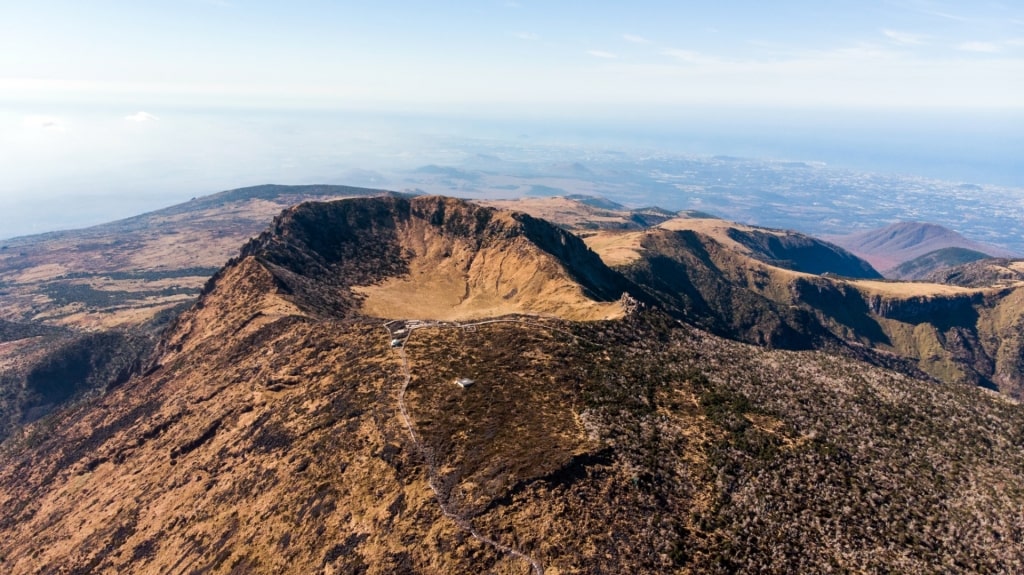
Mt. Hallasan
Mt. Hallasan, or Mt. Halla (“san” means mountain in Korean), at 6,388 feet, is the tallest mountain on Jeju Island, and in South Korea.
One of the most beautiful mountains in the world, Hallasan is a behemoth sitting in the middle of the island. The mountain enjoys a diverse ecology and exquisite volcanic geography.
Different trails, with various stages and starting points, will take you up to or near the summit and Baengnokdam crater lake.
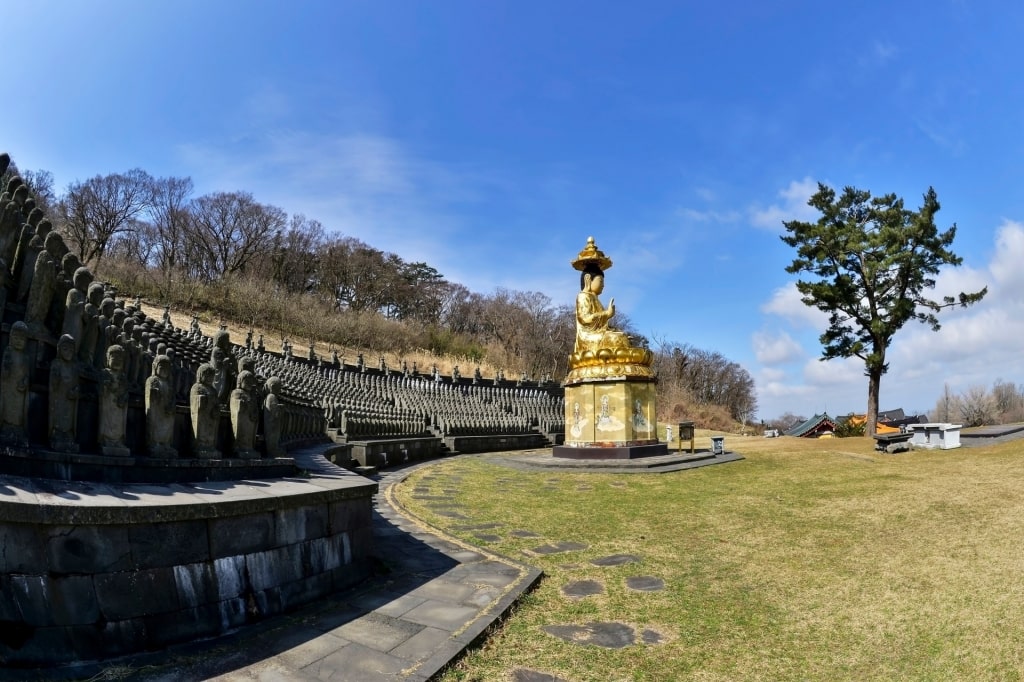
Gwaneumsa Temple
Routes that lead to the summit, like the scenic Gwaneumsa and Seongpanak footpaths, will require a permit and the better part of a day to complete. But you’ll also find rigorous walking trails here, like Seokgulam, that can be tackled in a couple of hours, or less.
Hallasan is a UNESCO Biosphere Reserve that hosts woodlands and an array of plant species and wildlife.
Hallasan National Park is also home to hundreds of parasitic volcanic cones, referred to as oreum in the local dialect, making a Halla trek of any length a rewarding outdoor adventure.
Hike Sections of the Jeju Olle Trail
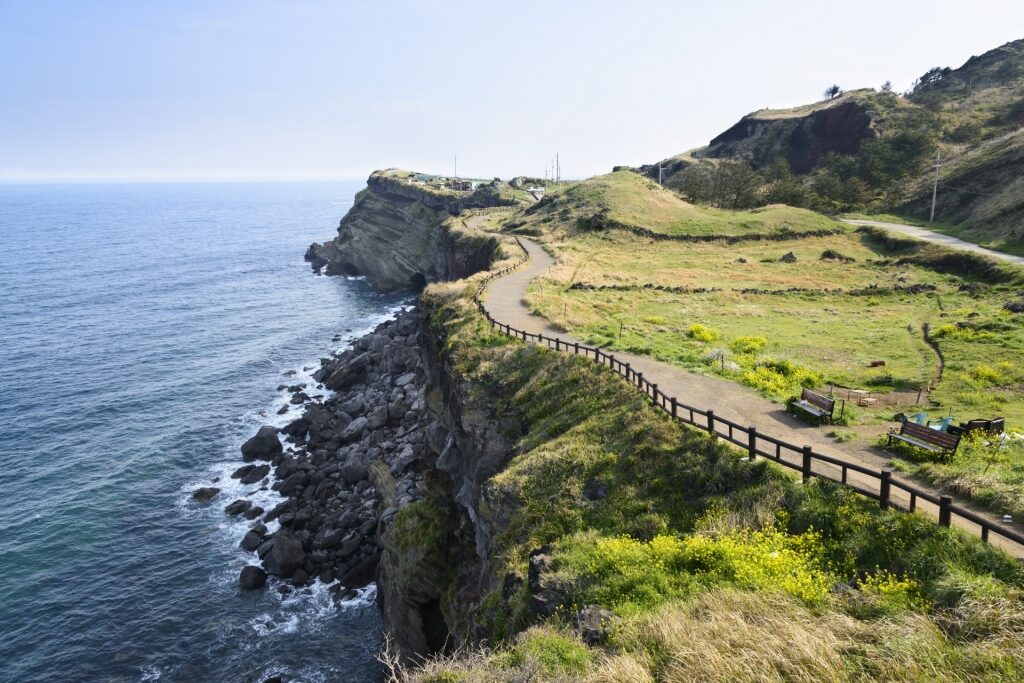
Jeju Olle Trail
If you adore nature and coastal landscapes, one of the best things to do on Jeju Island is to select one or two of the 27 official routes on the Jeju Olle Trail, then go for a scenic hike.
Jeju Olle Trail is about 272 miles long, but you don’t have to take on the entire walking course. This littoral path is broken up into smaller, more manageable routes, which can take anywhere from a couple of hours to half a day or longer to complete.
Different paths, marked with signposts, will take you past beaches, through forests, near waterfalls, across clifftops, and through green meadows and small villages.
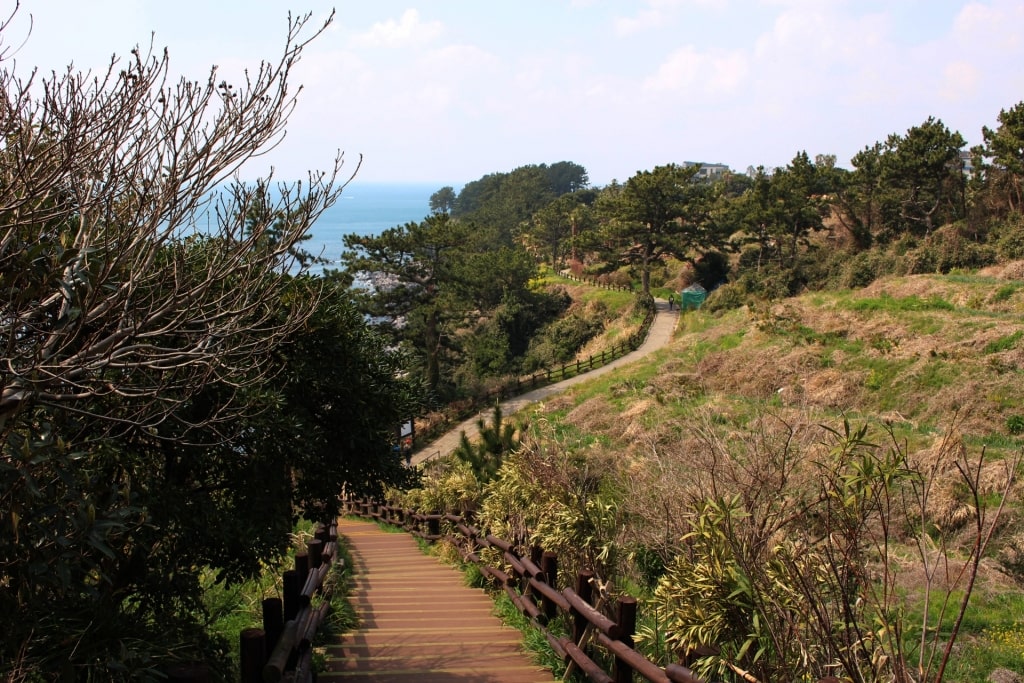
Route 7, Jeju Olle Trail
Route 7, in the south, requires at least five hours to complete and runs through Gangjeong village (known for its tangerine farming), and serves up brilliant seaside vistas.
Route 10, also in the south, is also popular. Route 10 starts at Hwasun Golden Sand Beach and passes by Sanbangsan, a bulky lava rock mountain. But with 27 routes to choose from, you’ll have plenty of opportunities to explore Jeju’s lengthy coastline.
Experience Cheonjeyeon Waterfalls
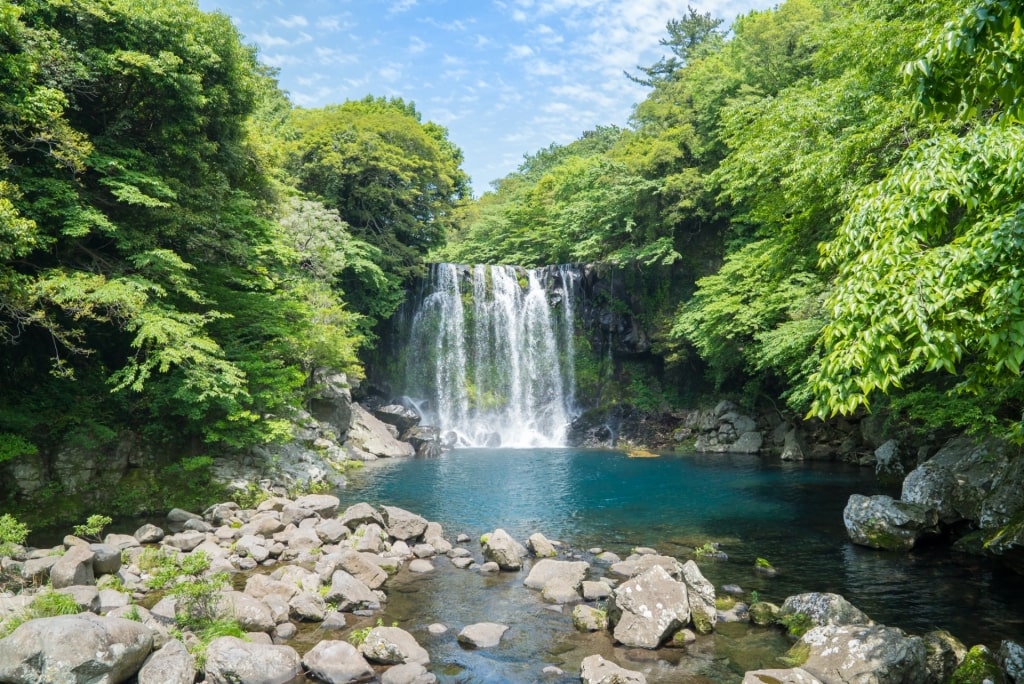
Cheonjeyeon Waterfalls
In the south, you’ll come across the three flowing tiers of Cheonjeyeon Waterfalls. The falls, also called “The Pond of God”, feature cold, blue water flowing out of a cave ceiling, which then feeds the picturesque cascades.
The inhabitants of Jeju once believed the waters here had therapeutic properties, and some people probably still do. A local legend tells of how fairies used to go for moonlight soaks in the pond below the falls; but don’t get your hopes up, as swimming is now strictly prohibited.
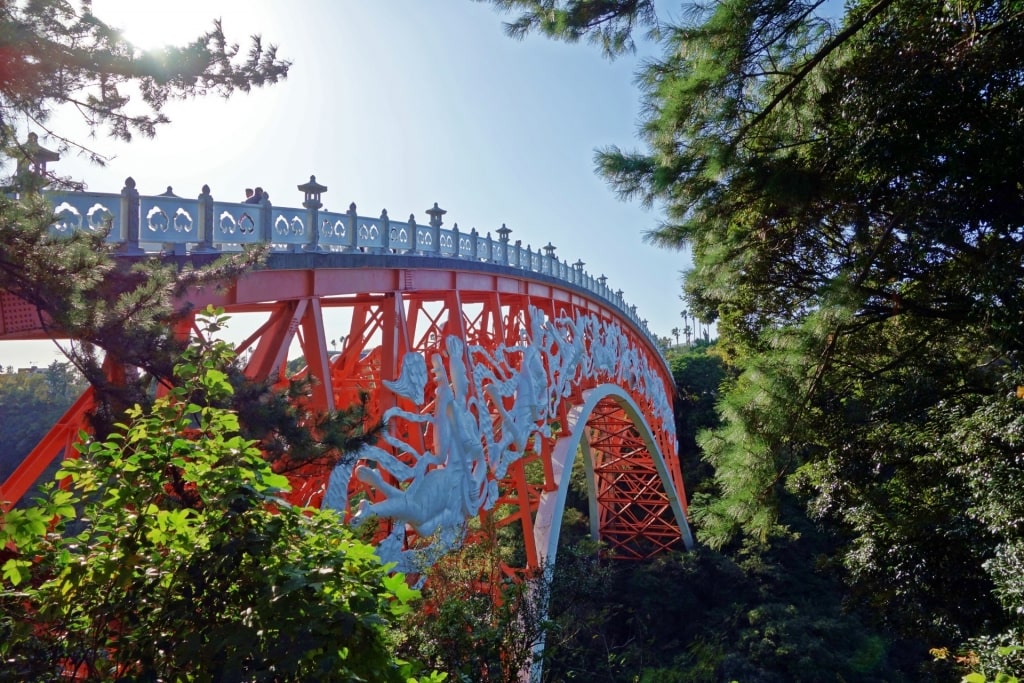
Seonimgyo Bridge
While in the area, you can stroll across Seonimgyo Bridge, a red span arching over the second and third tiers of the falls. The bridge, also known as Seven Nymphs Bridge, displays large white carvings of the fabled seven nymphs along its expanse.
Jump Into the Sea at Hamdeok Beach
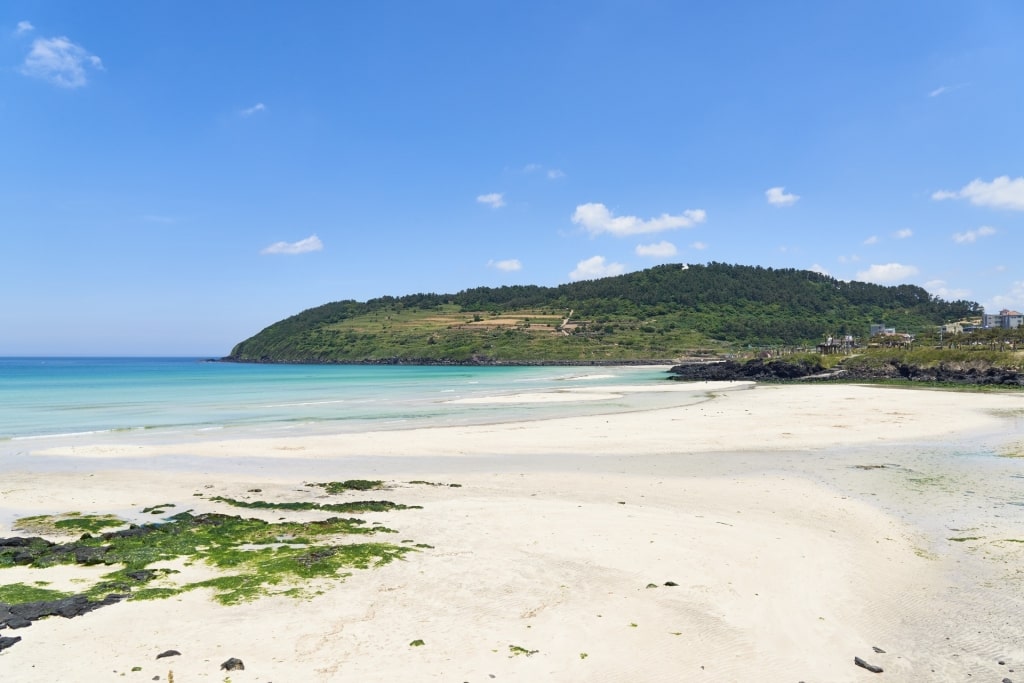
Hamdeok Beach
An enjoyable thing to do on Jeju Island is to explore the different beaches, and perhaps go for a dip in the sea. In the north, close to Jeju City, you’ll find Hamdeok Beach, one of the best beaches on Jeju Island, popular with locals.
Hamdeok Beach is sheltered from the wind by the nearby Seoubong Peak. The azure water here is calm and shallow, ideal for a swim or paddle boarding. The area is actually made up of three different beaches, with a sandbar providing further protection from the incoming waves.
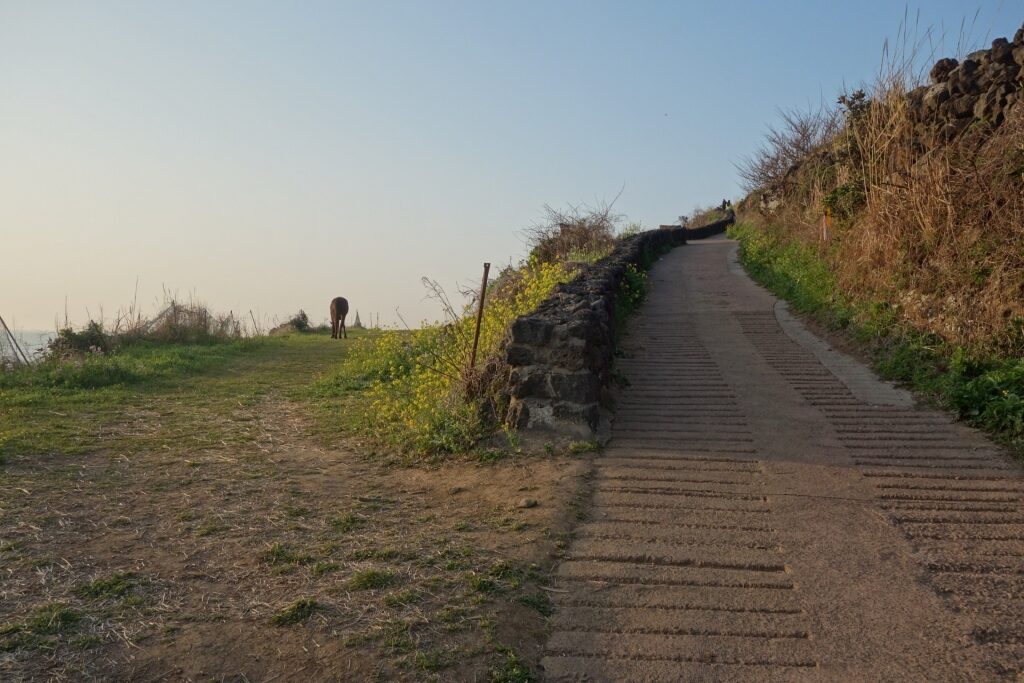
Seoubong Hill
You can water ski, rent a kayak, amble across the sand, or simply appreciate the ocean scenery from a local bar, like Café Delmoondo, while visiting the beach.
Ramble up the path to the summit of Seoubong Hill for vistas over the sandy shore and surrounding landscapes.
Learn About Jeju’s Diving Women at the Haenyeo Museum
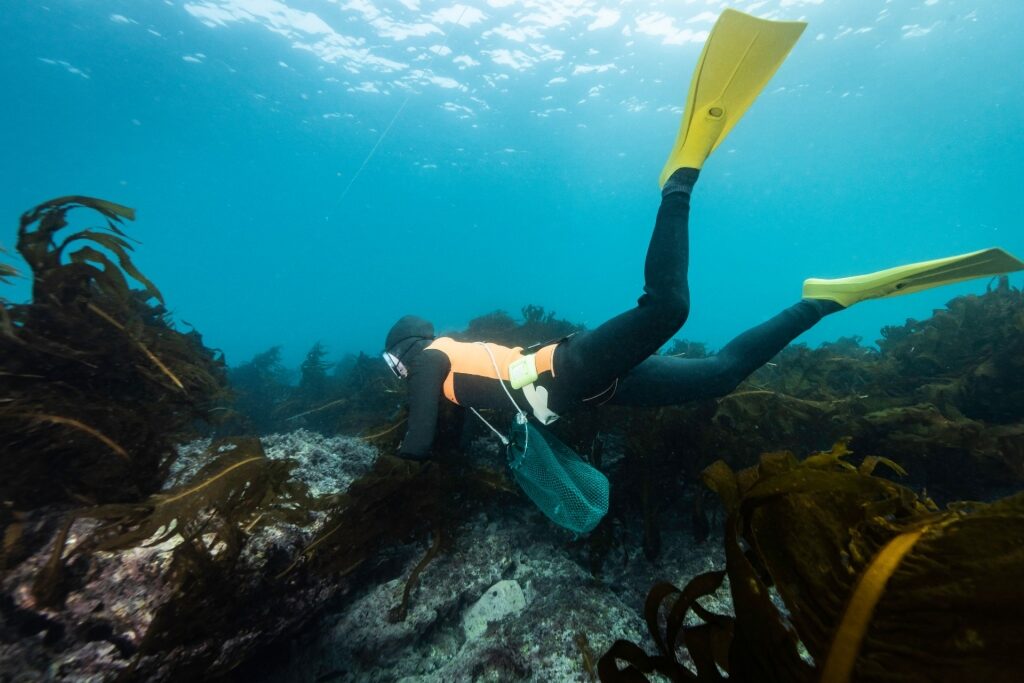
Haenyeo diver
While on Jeju, you might see or hear about Haenyeo divers. Haenyeo are traditional female free divers, with age no barrier—there are grandmothers among their group—who free dive with a knife in hand to collect mollusks, shellfish, and seaweed.
The Haenyeo Museum was set up to give the outside world insight into the centuries of Haenyeo culture that has thrived on the island. Different exhibits detail typical Haenyeo home and work life, along with the tools they use, like goggles, buoys, surface nets, and blades.
You’ll also find an exhibit here dedicated to Jeju’s fishing traditions. If time allows, visit the museum’s sculpture garden, where you can reflect on the cold-water life the Haenyeo and fishermen inhabiting Jeju have led for hundreds of years.
Head Underground Inside the Manjanggul Lava Tube
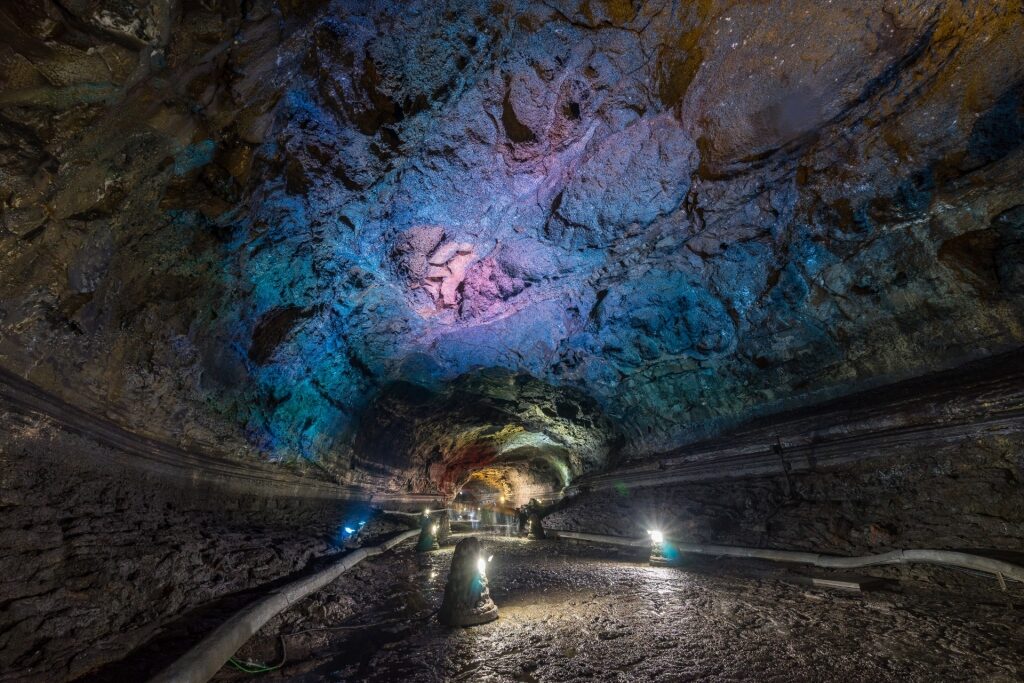
Manjanggul Lava Tube
In the northwest, you can survey one of the largest hollowed-out lava formations in the world by heading underground inside the Manjanggul Lava Tube.
Manjanggul Cave, which is connected to the basaltic Geomunoreum lava tube system, is a 4.6-mile channel formed several hundred thousand years ago.
Today, a roughly half-mile stretch of this spectacular natural tunnel is open to visitors. You’ll come across large stalagmites and stalactites, with sections of tunnel big enough to drive a bus through, plus a massive rock pillar, which is one of the tallest lava columns in the world.
Read: Best Caves in the World to Explore
“Rock Out” at Jeju Stone Museum
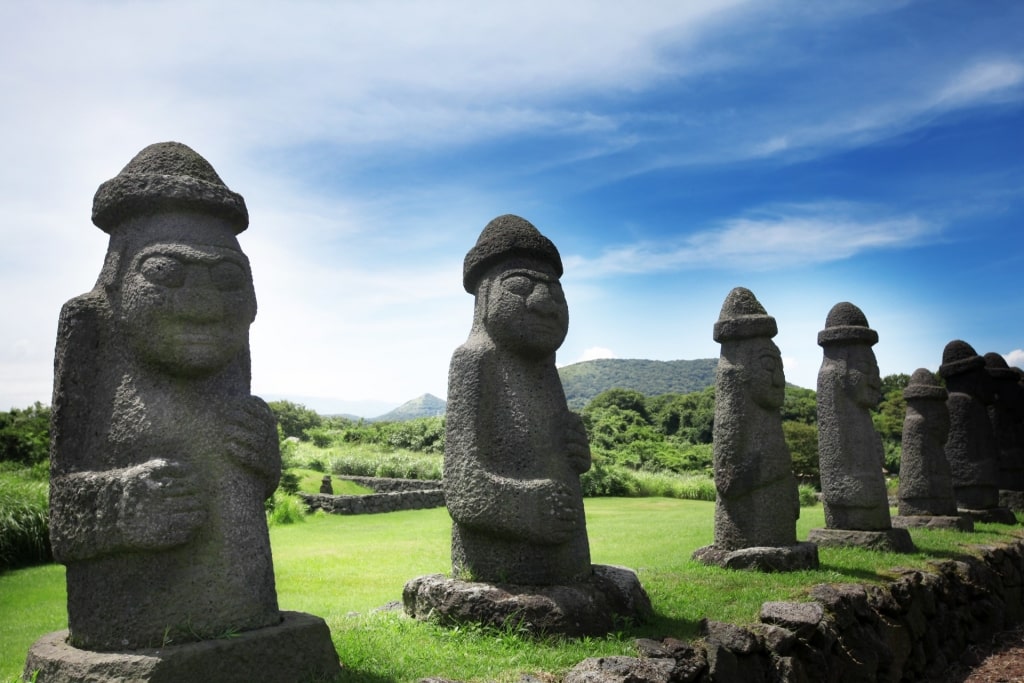
Jeju Stone Museum
Many of the best things to do in Jeju Island revolve around the volcanic culture stemming from the island’s topography. The sprawling Jeju Stone Museum complex is no different.
Jeju Stone Park highlights the local community’s long-standing relationship with volcanic rock. Some of the first features you’ll note here are the massive dol hareubang statues, carved out of lava rock.
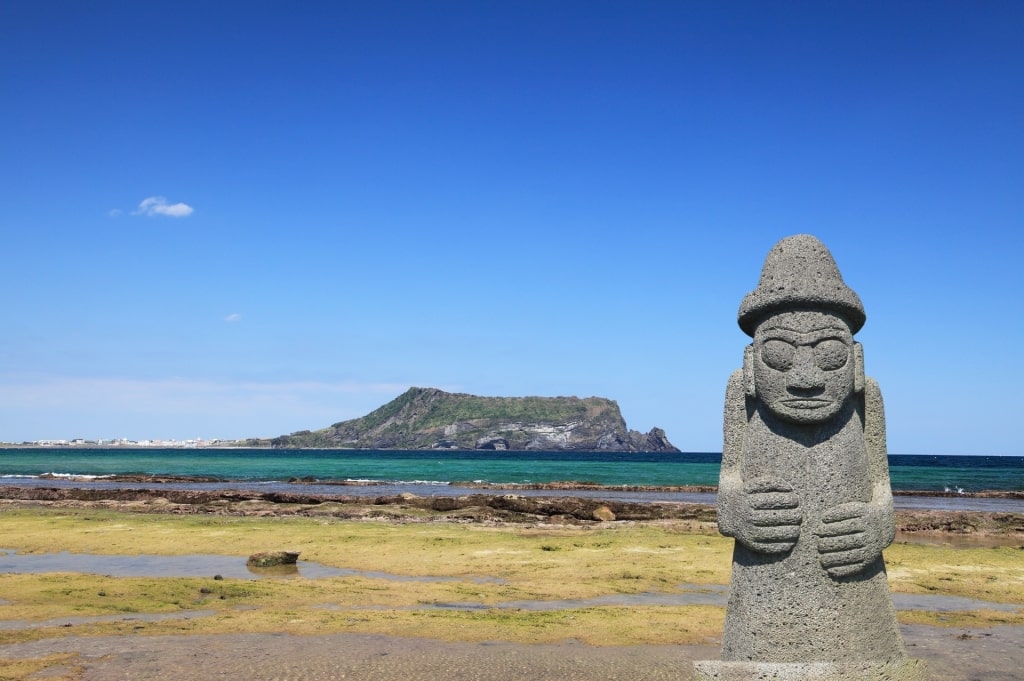
Dol hareubang
Dol Hareubang means “grandfather built out of stone,” and these statues are found all over Jeju. Stone grandfathers have traditionally been thought of as sentinels that keep evil spirits and mythological creatures at bay.
The park, spread across a large meadow surrounded by trees, also features indoor and outdoor spaces showcasing how Jeju’s inhabitants work with porous volcanic rock. Islanders have used these stones for centuries to create art, tools, and even the walls of their homes.
Walk Up Seongsan Sunrise Peak
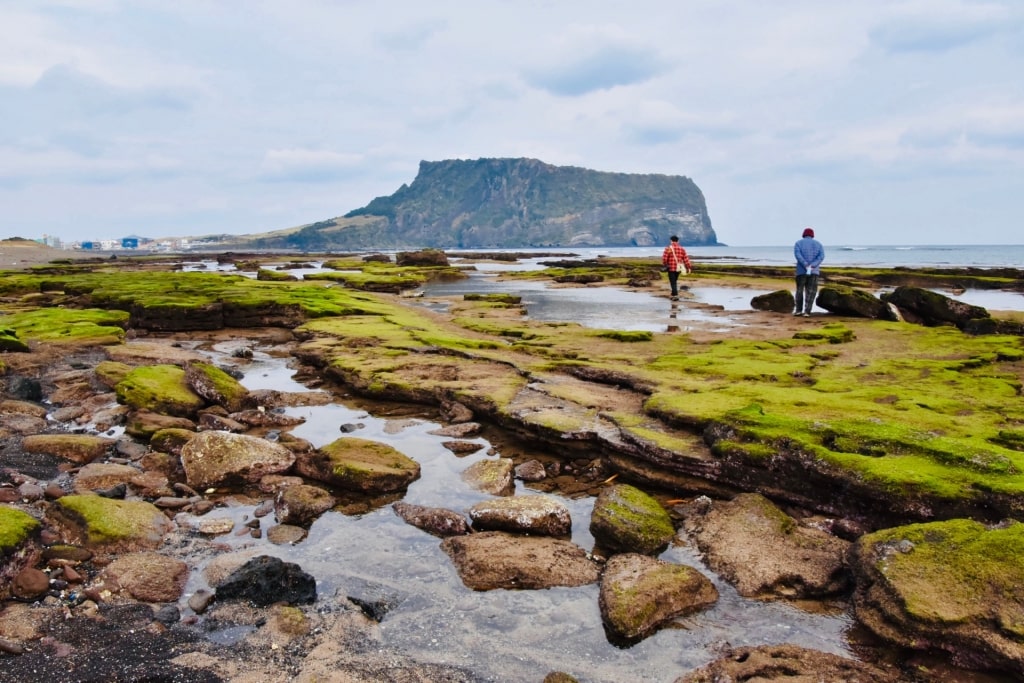
Seongsan Sunrise Peak
Seongsan Ilchulbong Peak is a UNESCO World Natural Heritage and Global Geopark located on the eastern side of this remote island. The peak’s crater juts out into the sea like a giant spoon or ladle.
This volcanic hill, around 590 feet high, was formed by an underwater eruption approximately 5,000 years ago. Today, Seongsan Ilchulbong is one of the most visited natural marvels on the island.
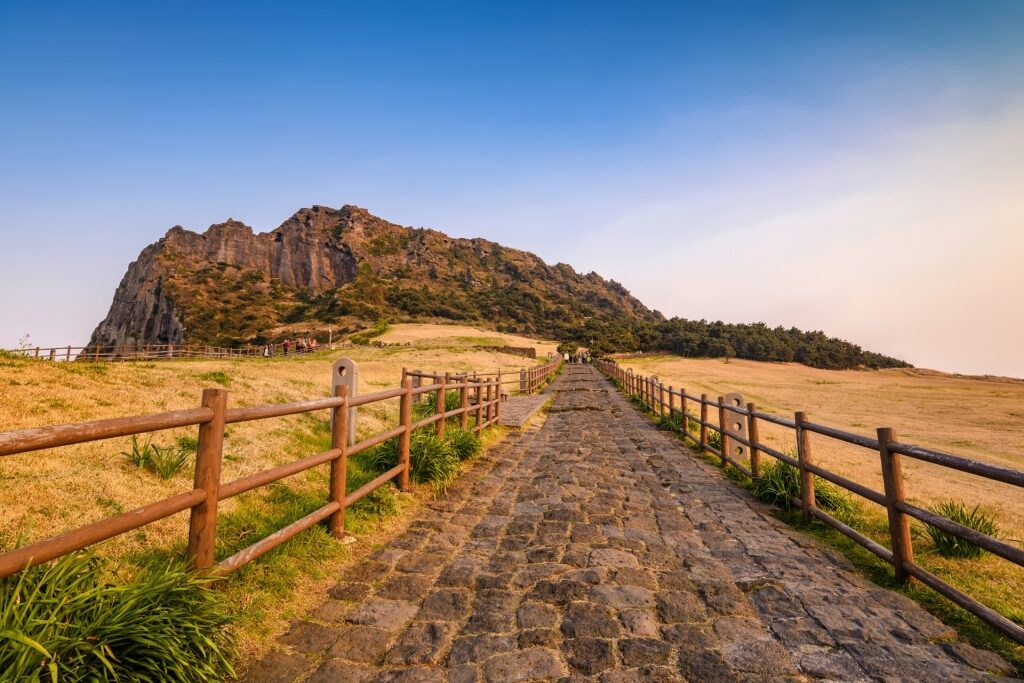
Seongsan Sunrise Peak
Even if your schedule won’t let you arrive early enough for an awe-inspiring sunrise, a hike up to the top of the crater is still a must on your adventure bucket list. Your reward is the spectacular panoramas of the sea and the eastern flanks of Jeju.
The protected crater, once used for farming, is now covered in greenery, which makes a trek to the top a pleasant and rewarding endeavor, capped off with breathtaking views.
Explore Jeju’s Lava-Formed Gotjawal Forests
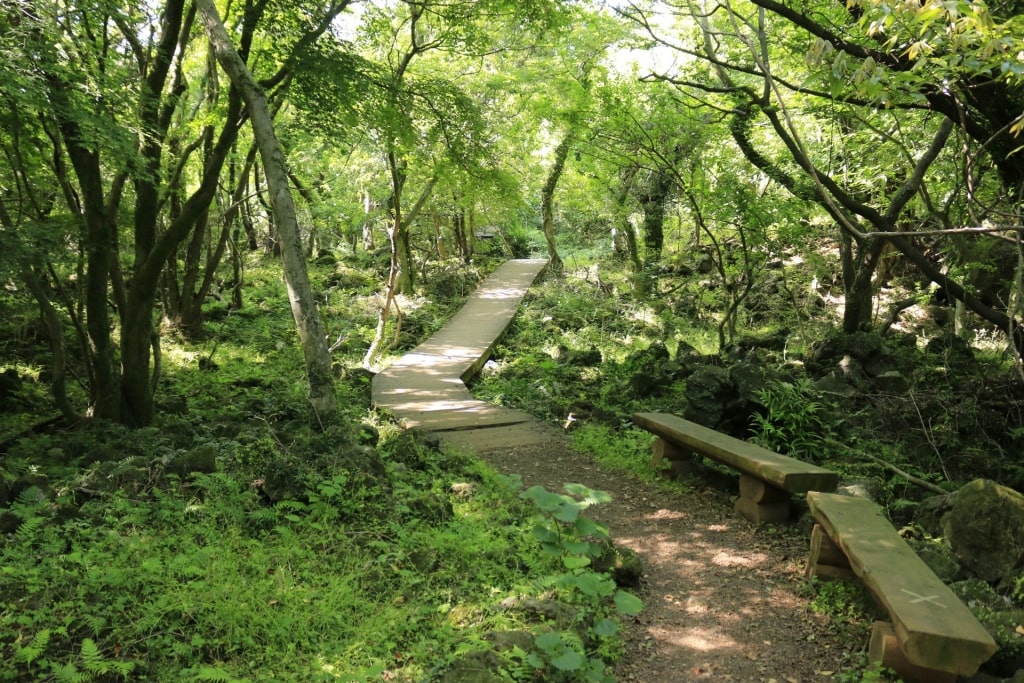
Hwasun Forest Gotjawal Park
On Jeju, forests growing out of rocky volcanic terrain are known as “gotjawal” forests. Regions with this type of topography, shaped by hardened lava, have over time given rise to pristine, primeval forests, difficult to farm thanks to the rocky surfaces.
One of the most beautiful forests in the world, the Cheongsu Gotjawal Forest is a volcanic woodland filled with camphor and other types of evergreen trees, situated close to Mt. Halla.
Due to volcanic ground vents, temperate and tropical plants thrive in the forest’s unique microclimate. A walk through Cheongsu, lush with greenery, will offer you a nature-based breather away from the busier spots on Jeju.
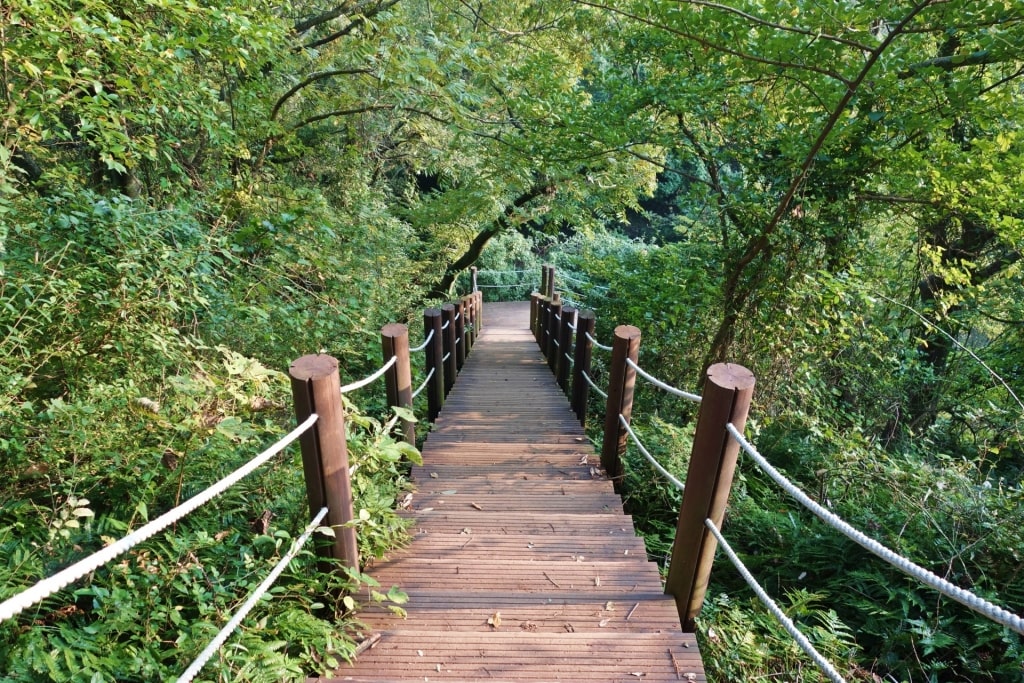
Hwasun Forest Gotjawal Park
Hwasun Forest Gotjawal Park is another woodland rich with biodiversity. You can take guided tours along the forest’s eco-trail loops, or wander around the paths on your own.
You’ll also find other gotjawal forests scattered across Jeju, like Mureung, and Seonheul, each with its own unique character, although all of them act as the “green lungs” of the island.
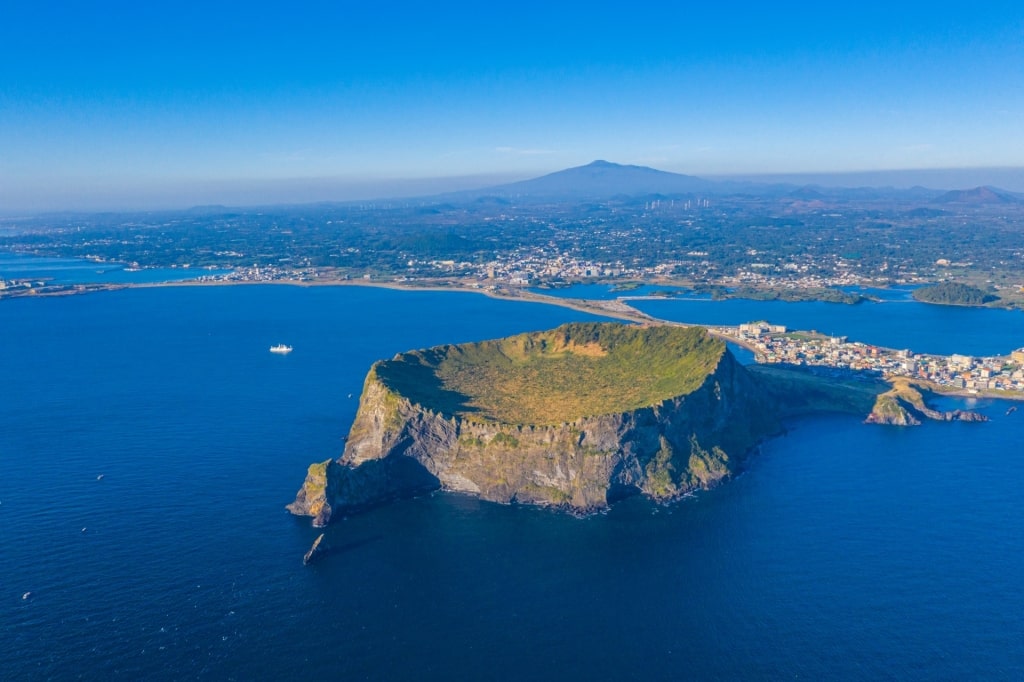
Seongsan Ilchulbong Peak
If you’re fascinated by all that island has to offer, learn more about the island and its many wonders by browsing Celebrity’s thrilling Jeju Island cruises.
